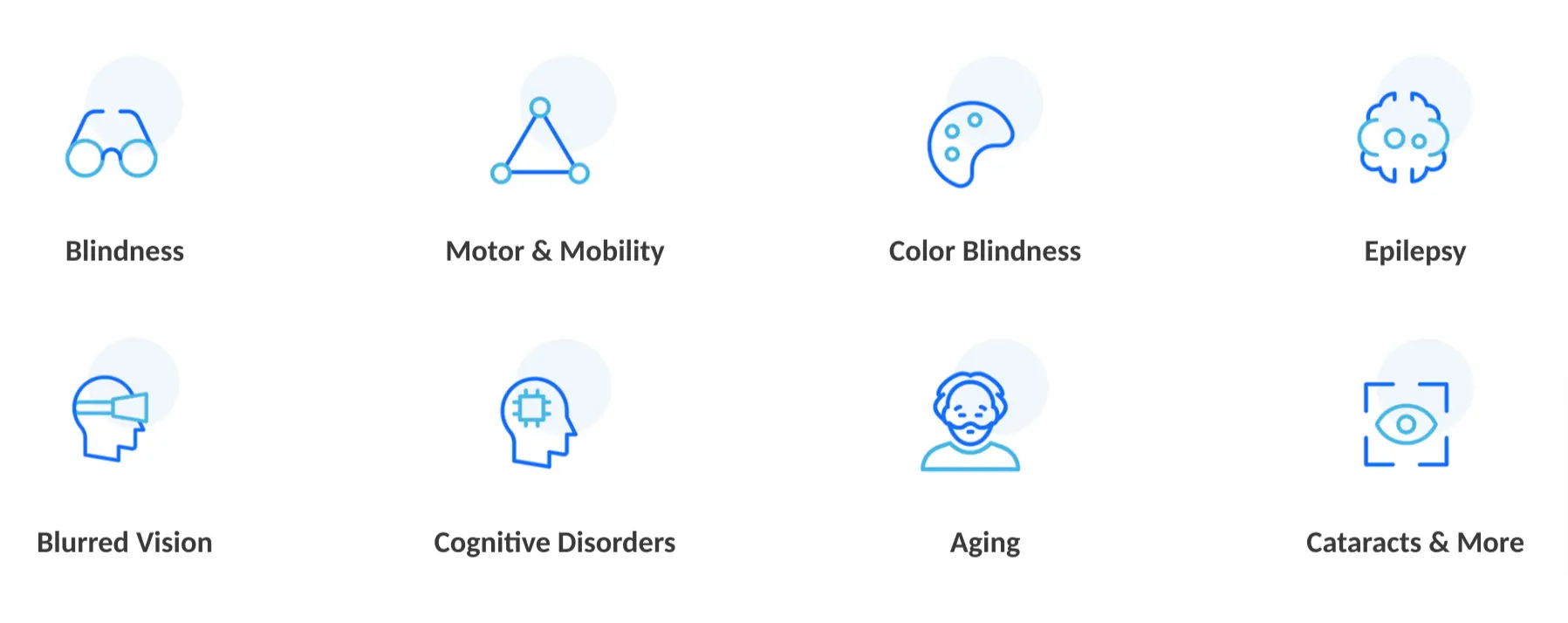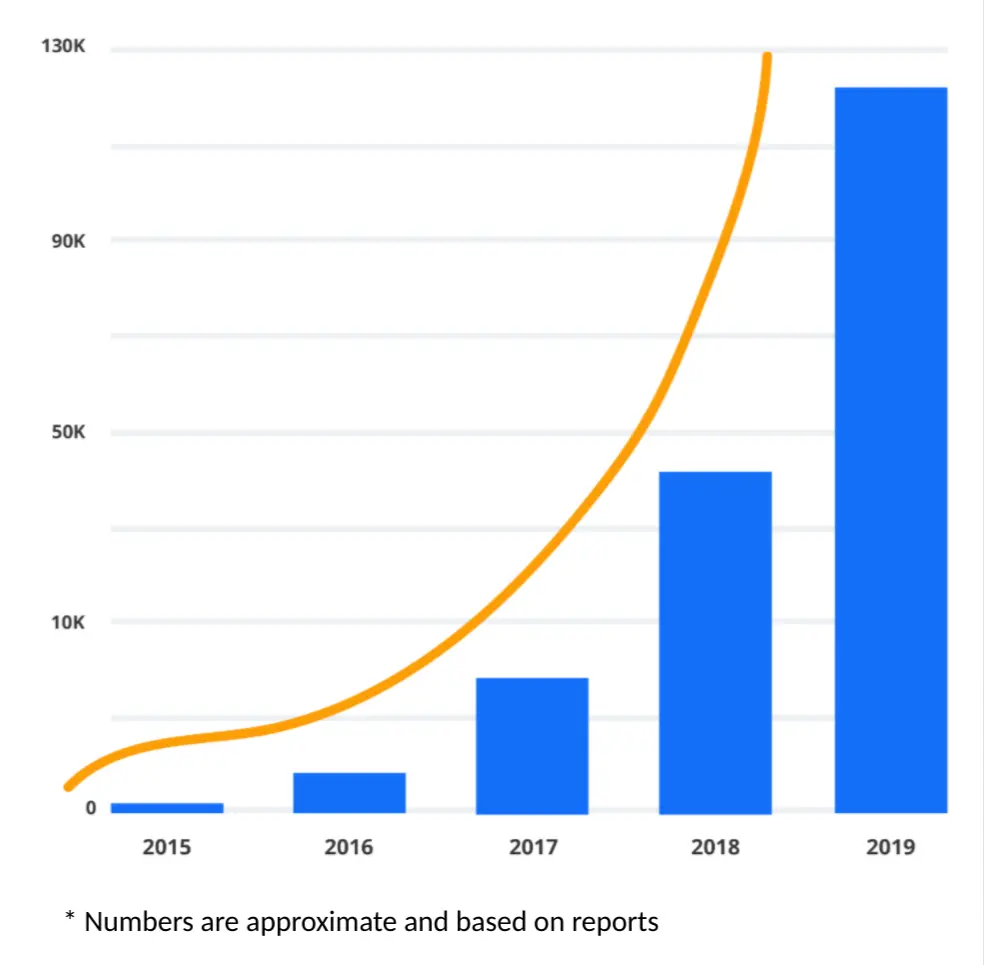ADA compliance is a serious issue. In the United States, Title III of the Americans with Disabilities Act (ADA) prohibits discrimination against individuals with disabilities in places of public accommodation. This includes businesses that offer goods or services to members of the general public. As such, having an ADA compliant website is essential for any business looking to provide access to customers across all spectrums.
What Is Web Accessibility?
Web accessibility is essentially a set of rules, behaviors, code standards, and design guidelines that were created by The World Wide Web Consortium (W3C) and are called the WCAG 2.1.
The WCAG 2.1 is a massive 1,000-page guidebook that encapsulates a range of disabilities that go from hindering internet use to making internet use impossible without adjustments. This spectrum actually comprises 20-25% of the general population depending on if we’re going with the CDC or WHO.
There are many disabilities covered, and the primary categories that require attention are:
- Blind people using screen-readers
- The motor-impaired using only the keyboard to navigate
- Epilepsy, color blindness
- Cognitive and learning disabilities
- Visual impairments, and more

Why Should You Have An ADA Compliant Website?
I wish I could tell you that the exponential increase in demand for web accessibility has been a result of everyone coming to understand that business owners and people with disabilities have so much to mutually gain from this endeavor.
Frankly, ADA compliance lawsuits are on nothing short of an intense rise. 200% year over year, with reports of 10’s of thousands of demand letters and lawsuits, targeting businesses of all sizes. At first, only the largest of enterprises and government institutions were legally pressured to become accessible, which makes sense. One of the most significant shifts in the legal climate was when the DOJ at the end of 2018 officially affirmed that all websites are considered public accommodations and therefore must comply with Title 3 of the ADA. Many did not think for a second that it will ever happen to them, but that was not the case at all.
In fact, 2019 ended up tripling 2018 in the number of papers served. This means that for every business hour in 2019, a business was served for not being web-accessible. You will also find that in almost every situation, the plaintiff wins the case on its merits because it’s a strict liability law and judges are often understandably sympathetic to people with disabilities who really only want equal rights. There is virtually no chance of winning an ADA case when you’re not compliant. The lawyers simply advise their clients to write a check since there is no point in fighting it.
If your website is not ADA compliant, it is essentially a ‘sitting duck’ for a lawsuit because it is not accessible for all.
- 200% increase in lawsuits and demand letters from 2017 to 2018
- DOJ affirms ADA applies to websites by November 2018
- 2019 seems like it’s going to triple 2018
- Over 150,000 demand letters served to businesses since 2017
- 93% of demand letters settle outside of court for $20,000 – $150,000 on average
- 7% of businesses fight and lose in court

To start making your website ADA compliant, follow these simple steps:
- Create an ADA compliance page on your website
- Include ADA-related links on pages throughout your site
- Use ADA-compliant language throughout your site
Compliance is a process and it will take some time and effort. By adhering to ADA compliance guidelines, you can ensure that your website is accessible for all potential customers
ADA Compliance Guidelines:
- Use ADA-compliant language throughout your site. For example, use “click here” instead of “mouse over here” when linking text or buttons together. This will help make it easier for users who might need a mouse or other pointing device to navigate through your website more easily by clicking where they want to go rather than having them search around with their cursor until they find what they’re looking for.
- Ensure ADA compliance across all of your website’s pages. For example, if you have a link on one page that takes the user to another ADA compliant page, make sure both are ADA compliant so no issues arise with browsing through your site.
- If you use videos or other media files on your website, be sure they work for those who might need them in an ADA-compliant manner as well (e.g., captioning). Make it easy and obvious where users can find these options throughout the site/media files themselves.
ADA Compliance Best Practices:
- Be consistent with ad size and color when displaying content; don’t change fonts drastically from one paragraph to another.
- Ensure all links are easy to identify and use.
- Make sure your website is mobile-friendly, as many ADA users utilize their phones or tablets for browsing the web.
- Ensure each page is clearly titled and is adaptable to screen readers.
- Use buttons instead of text links when possible so it’s easier to navigate.
- Use color contrast to make it easier for users with vision impairments. For example, ensure your website is readable on a white background and set text against a contrasting color (e.g., black) or use an image overlay of the text itself (e.g., white type over a transparent red).
- Ensure that all calls to action are clear and accessible by everyone—not just those who can see them easily without any assistance whatsoever! If you want visitors to sign up for something, add instructions about how they can do so if visually impaired in another place on the page too so there’s no confusion.
The website accessibility guidelines set by the Americans with Disabilities Act (ADA) are designed to make websites and digital content more inclusive for people of all abilities. If you’re looking to improve your website design, we can help! We offer a diverse range of services that will get your company up-to-date on compliance and give it an edge in today’s competitive market.
Our team is ready and waiting to work with you on making sure your website offers optimal usability and convenience for disabled individuals when they visit. Contact us now if you want our expert advice!



